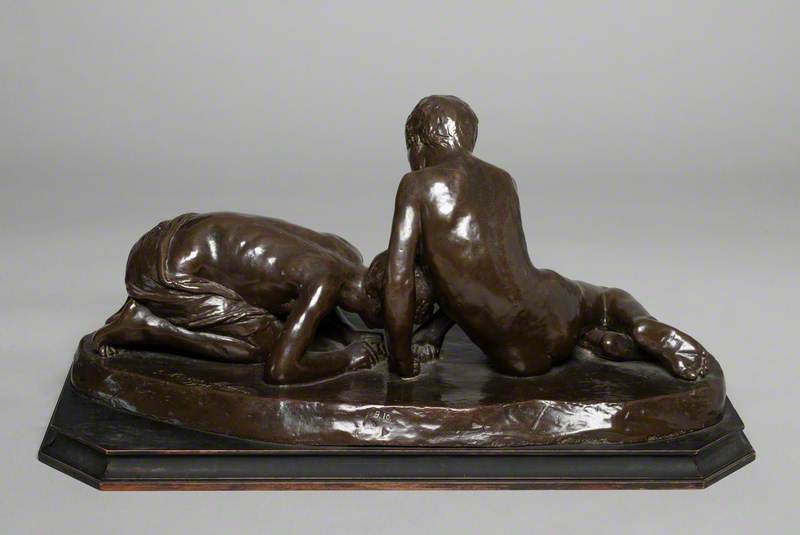
Edwin Roscoe Mullins [also known as E. Roscoe Mullins] was born in Holborn, London, England on 22 August 1848. He attended Lambeth School of Art and the Royal Academy Schools in London and spent a period training in the workshop of John Birnie Philip (1824-1875). He then travelled to Munich where he was a pupil of the sculptor Michael Wagmüller (1839-1881) [1], during which time he shared a studio with the British sculptor Edward Onslow Ford (1852-1901). Following his return to London in 1874, Mullins embarked on a career as a freelance sculptor. He exhibited frequently at the Royal Academy in London from 1873 to 1905. He also exhibited at the Grosvenor Gallery, New Gallery, Royal Society of British Artists and Dudley Gallery in London; the Walker Art Gallery in Liverpool; Leeds City Art Gallery; Manchester City Art Gallery; the Royal Glasgow Institute of the Fine Arts; and in Munich and Vienna.
He was a founder member of the Art Workers Guild in 1884 and was elected a member of the Royal Society of British Sculptors in 1905. Between 1896 and 1906 he taught modelling at the Central School of Arts and Crafts in London. He was the author of A Primer of Sculpture (London: Cassell, 1889).
Commissions on which Mullins worked included portrait busts of the cricketer W. G. Grace (1887) and Field Marshal Sir Henry Evelyn Wood (1896); and statuettes of Prime Minister William Ewart Gladstone (1878) and the artist Val Prinsep (1880). Among his public sculptures were a statue of Henry VII for Scott's Building, King's College, Cambridge (1883); a sculptural pediment for Harris Museum and Art Gallery in Preston (1886); and five decorative relief panels for Croydon Town Hall (1896). One of his strangest commissions was s statue of a circus horse in Brighton cemetery, executed in 1893 as a memorial to Mr Ginnett, a well-known circus owner.
Mullins died in Shirley, Walberswick, Suffolk on 9 January 1907.
_____
[1] The DNB states that Mullins moved to Munich in 1866, however, this appears to be inaccurate. In 1871 he was lodging 40 Bessborough Gardens, St. John the Evangelist, Westminster, London according to the England and Wales that year. It is probable that he left for Munich after this. Records show that he was living at 3 Unter Garten Straase, Munich on 1873.
Text source: Arts + Architecture Profiles from Art History Research net (AHRnet) https://www.arthistoryresearch.net/















